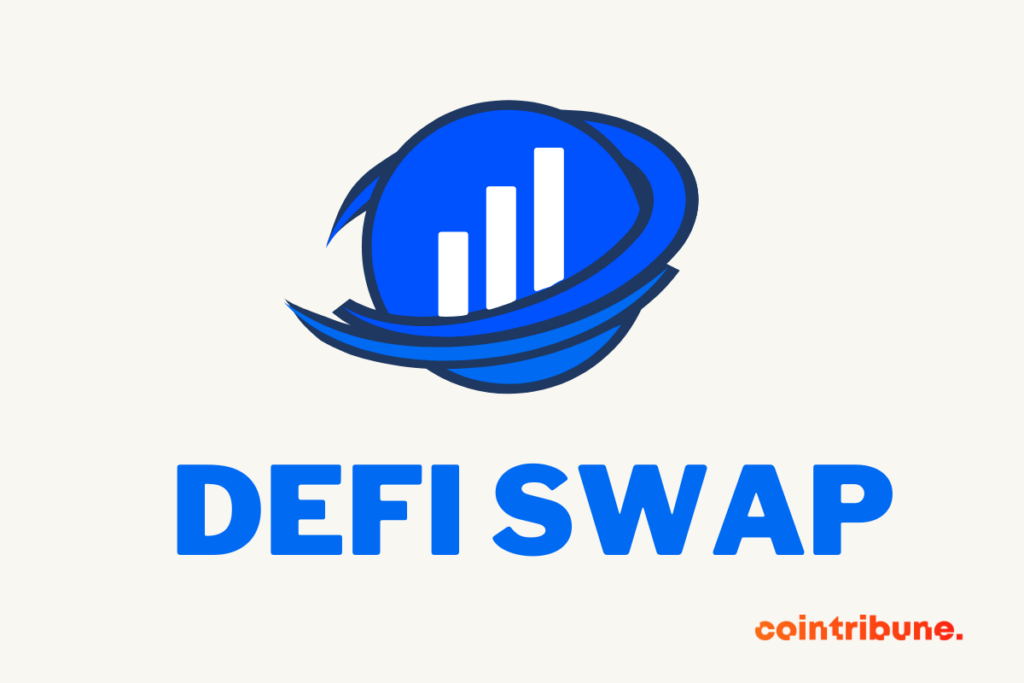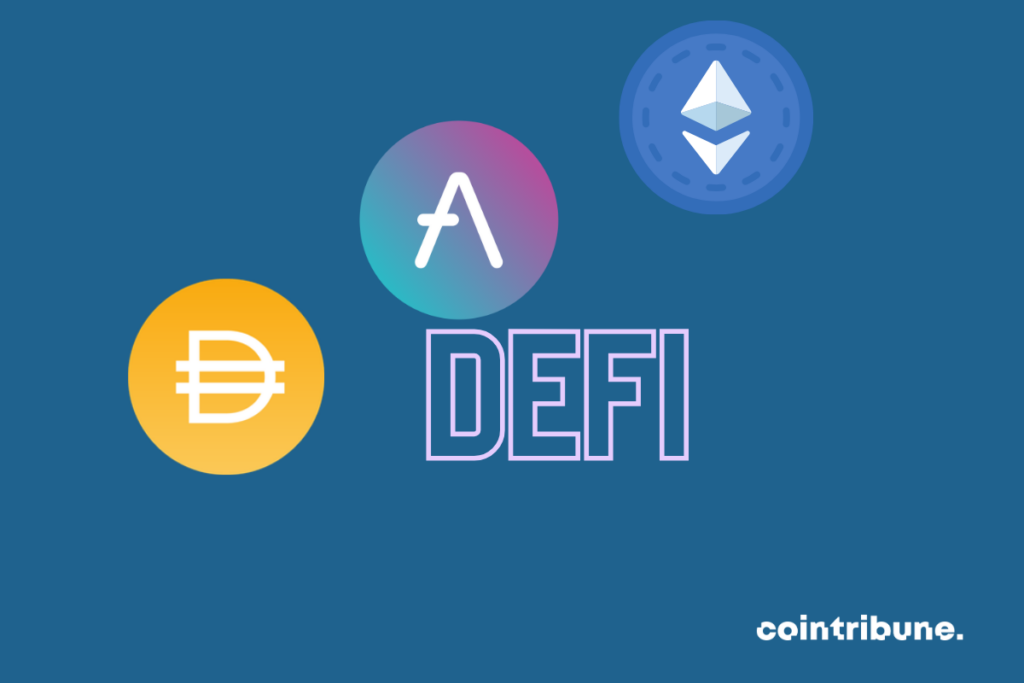DeFi Swap: The Ultimate Guide to Decentralized Exchanges
The exchange of tokens on DeFi platforms is an essential practice for anyone interested in decentralized finance. These platforms offer a direct and secure way to conduct transactions without intermediaries, thus revolutionizing how digital assets are exchanged. This article provides a practical and detailed guide for making swaps on DeFi platforms. Aimed at both beginners and experienced users, this guide covers all the necessary steps to make effective and secure exchanges, emphasizing the understanding of mechanisms and key strategies within the DeFi swaps universe.

The concept of DeFi Swap and its role in the DeFi ecosystem
In the world of decentralized finance (DeFi), the term “swap” refers to the exchange of tokens or cryptocurrencies without the intermediary of a central entity. These exchanges occur directly between users on decentralized platforms. The swap plays a crucial role in the DeFi ecosystem, as it offers a flexible and secure option for trading various digital assets, such as bitcoin, ether, or other less well-known tokens.
How do swaps work in DeFi?
The swaps in DeFi rely on smart contracts to automate and secure transactions. Unlike traditional exchanges, there is no order book. Platforms like Uniswap use a model called Automated Market Maker (AMM) to determine exchange rates. In this model, rates are set by algorithms based on the ratio of tokens in liquidity pools. Users can also become liquidity providers by depositing their tokens into these pools, thereby earning yield or interest on their assets.

Step-by-step guide to making a swap on a DeFi platform
In the ever-evolving world of decentralized finance (DeFi), making a swap on a DeFi platform is an essential skill for any cryptocurrency enthusiast. This detailed guide will walk you through the key steps to perform an effective and secure swap using popular platforms like Uniswap.
Choosing a reliable DeFi platform
The first crucial step in the DeFi swap process is selecting a reliable platform. Platforms like Uniswap stand out for their intuitive user interface and wide range of token options. It is important to look for platforms that offer good liquidity, ensuring that your swaps will be executed quickly and at a reasonable rate. Moreover, the security of the DeFi platform is paramount. Check the platform’s background, including security audits and user feedback, to ensure your assets will be safe.
Connecting and securing your crypto wallet
Once the platform is chosen, the next step is to connect your crypto wallet. Wallets like MetaMask are often used for their ease of integration with most DeFi platforms. When connecting, make sure the website address is correct to avoid phishing attempts. It is also important to never share your private key or recovery phrase. Once connected, ensure you have enough crypto to cover not only the swap but also the transaction fees, which may vary based on network congestion.
Selecting tokens and understanding exchange rates
The choice of tokens to exchange is a strategic decision. On platforms like Uniswap, you can select from a wide range of tokens, including lesser-known options. Before proceeding with the swap, it is important to understand how exchange rates are determined. In an AMM system like that used by Uniswap, the rates are determined by the ratios of tokens in the liquidity pools, which can lead to price fluctuations. Take the time to analyze the market and choose the right moment to perform your swap.
Confirming and executing the swap
After selecting your tokens and checking the exchange rates, the next step is to confirm and execute the swap. On the platform, enter the amount you wish to exchange and check the transaction details, including network fees. Once everything looks correct, confirm the transaction in your crypto wallet. It is important to note that once confirmed, the transaction is irreversible.
Managing risks and monitoring the transaction
Once the swap is initiated, it is important to manage risks and monitor the transaction. DeFi swaps can be affected by market volatility. You should therefore closely monitor price changes after your transaction. Additionally, keep an eye on the transaction in your wallet or by using a blockchain explorer to ensure it is being processed. If there are delays, this could be due to network congestion.
Risks to consider
DeFi swaps, despite their appeal, come with significant risks. The volatility of cryptocurrency prices can lead to unexpected losses during exchanges. Risks associated with smart contracts are also concerning, as security flaws can lead to asset losses. Moreover, liquidity risks arise if a liquidity pool does not have enough assets to facilitate a swap, potentially impacting exchange rates. Users must fully understand these risks and act cautiously when using decentralized swap platforms.
Conclusion
Making a swap on a DeFi platform may seem complex at first, but by following the clear and methodical steps presented, even beginners can successfully execute this operation. The key lies in choosing a reliable platform, securing your wallet, gaining a thorough understanding of exchange rates, and executing transactions cautiously. DeFi swaps offer an exciting opportunity to explore the dynamic world of decentralized finance and capitalize on its unique advantages, but one must remain vigilant against inherent risks.
Maximize your Cointribune experience with our "Read to Earn" program! For every article you read, earn points and access exclusive rewards. Sign up now and start earning benefits.
The Cointribune editorial team unites its voices to address topics related to cryptocurrencies, investment, the metaverse, and NFTs, while striving to answer your questions as best as possible.
The views, thoughts, and opinions expressed in this article belong solely to the author, and should not be taken as investment advice. Do your own research before taking any investment decisions.